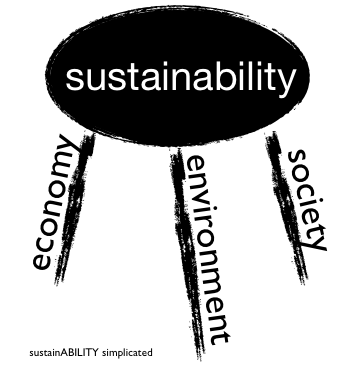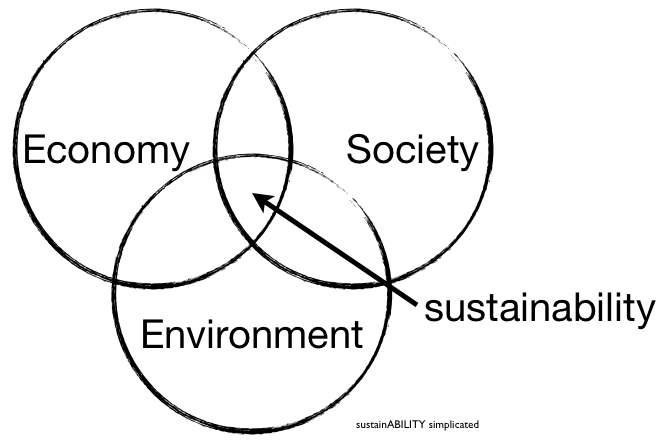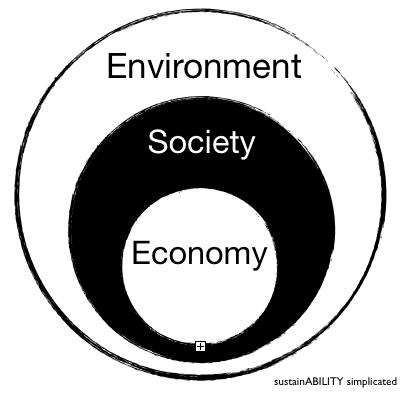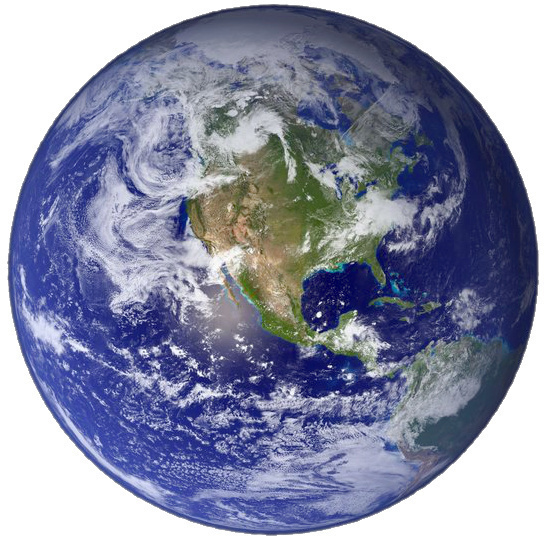Want to intimidate people at conference cocktail parties? Confuse your manager? Love the look of crooked eyebrows staring back at you?
Ya, neither do we.
We prefer to gather a Good Gang of allies rather than scare the crapola out of people with jargon, complexity, and confusion. So you gotta talk to people in plain English (or Mandarin, French, Hindi, Spanish, or whatever you prefer).
In Simplicate This! we simplicate a smart article so you can slide it in your tool belt next to your sustainability nun-chucks and business cards for the next networking event, board presentation, or interview.
We kick off with the timeless article 3 Sustainability Models from leader, guide, and champion of champions, Bob Willard. Bob's blog is a fantastic resource for champions of sustainability like you. The writing is timeless and the resources are rich. Check him out at Sustainability Advantage.
Now, read on for quick access to and an easy reference guide of Bob's 3 Sustainability Models.
Simplicate This! Bob's 3 Sustainability Frameworks
Back in the day (1987 to be exact), the UN Brundtland Commission defined "sustainable development" as "meeting the needs of the present generation without compromising the ability of future generations to meet their own needs." Compelling, but rather vague.
Enter metaphor!
1. 3-Legged Stool
Ever fallen off of one? Right, it's embarrassing. Which is what we look like when we forget that our businesses and organizations need all 3 legs to sustain themselves.
Advantage: Just like you never forget falling off a stool, you'll never forget this framework now.
Disadvantage: The real world doesn't actually have independent legs, streams, or pillars of economic, social, and environmental dimensions. They all mix together.
2. Sweet Spot
Oh la la, we've seen a similar sweet spot diagram around here already! 
Advantage: The dimensions integrate like (warning: another metaphor coming!) ingredients of a pie.
Disadvantage: However, the ingredients of a pie (fruit, butter, flour) do exist independent of each other and are quite delicious before mixing together to make something even better. In the real world, though, 'ingredients' are not independent of one another. You don't have a portion of society not related to the environment or part of the economy not tied to its environment.
3. Nests
Who doesn't love the idea of our solution being a warm, safe nest?

Advantage: The order of operations is accurate: everything occurs inside the nest of the environment. Then society creates the economy inside of it. As Bob says, "the economy is the tail and society is the dog - not vice versa."
Disadvantage: The economy also affects society symbiotically as anyone who's out of work can attest. Does that make it a two-tailed dog?
+1: SpaceShip Earth
Hey! This one looks familiar! This is the real world. It's a swirly, beautiful mess. Everything mixes, touches, influences, causes, correlates, and creates together -- this is a system. 
Advantage: You know what this one looks like. And it is the most beautiful.
Disadvantage: There are no lines dividing the environment from society from the economy. Which is just how it is in the world. There are no actual borders or boundaries. Many people are uncomfortable working without clear confines.
So now that you have various frameworks to think about sustainability, which one works for you? Which one sticks? Which one can you explain to others most easily?
Edited by Cortney McDermott